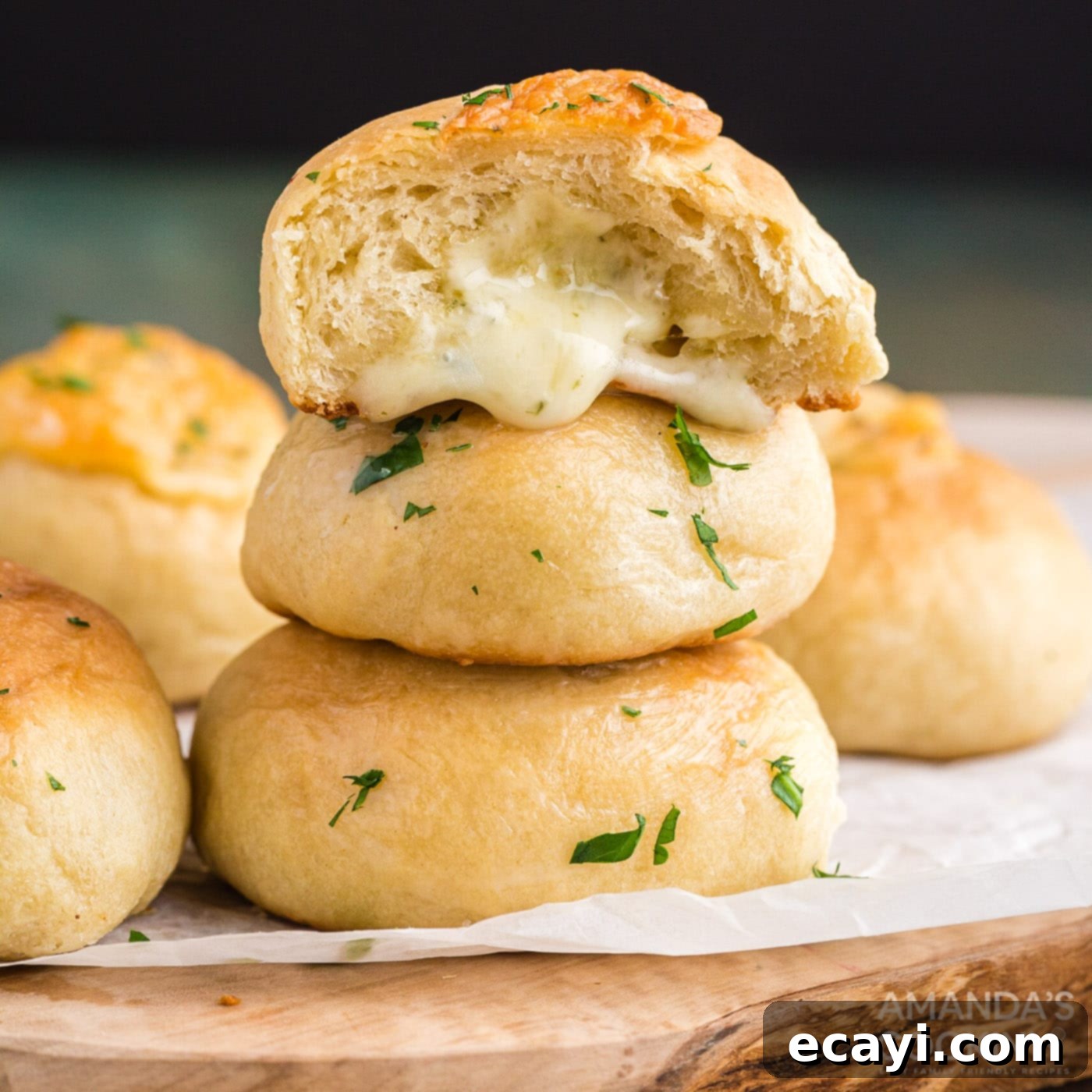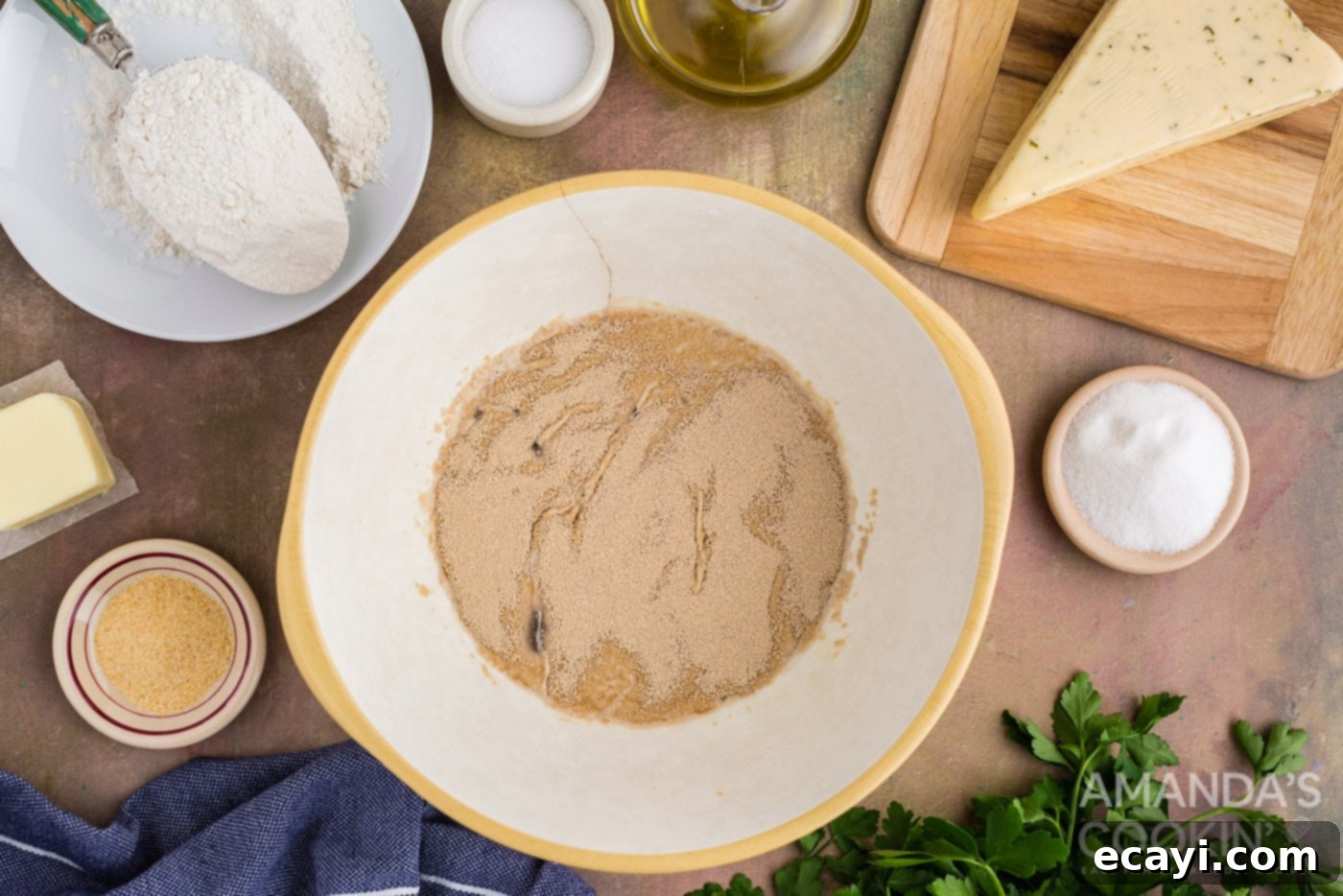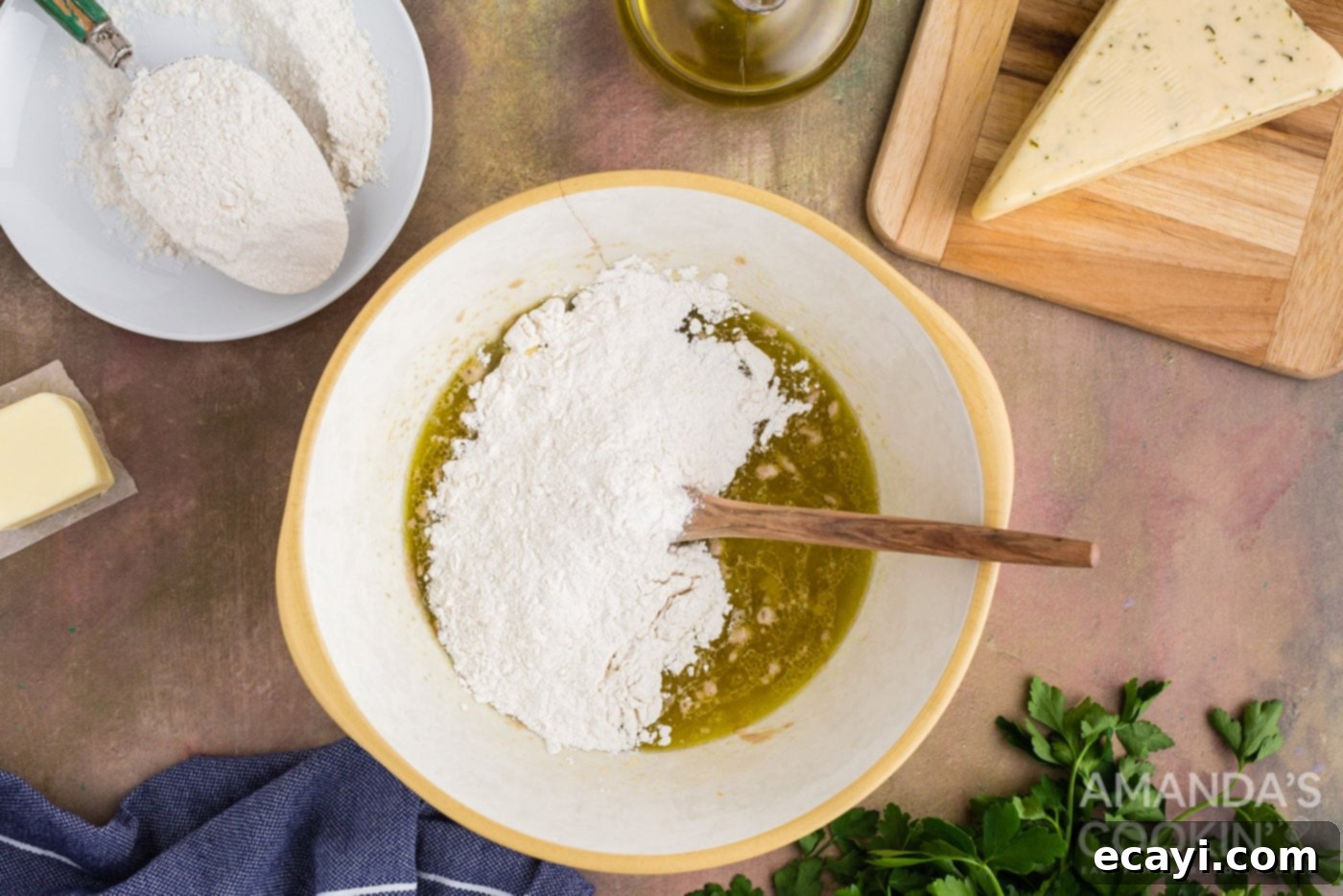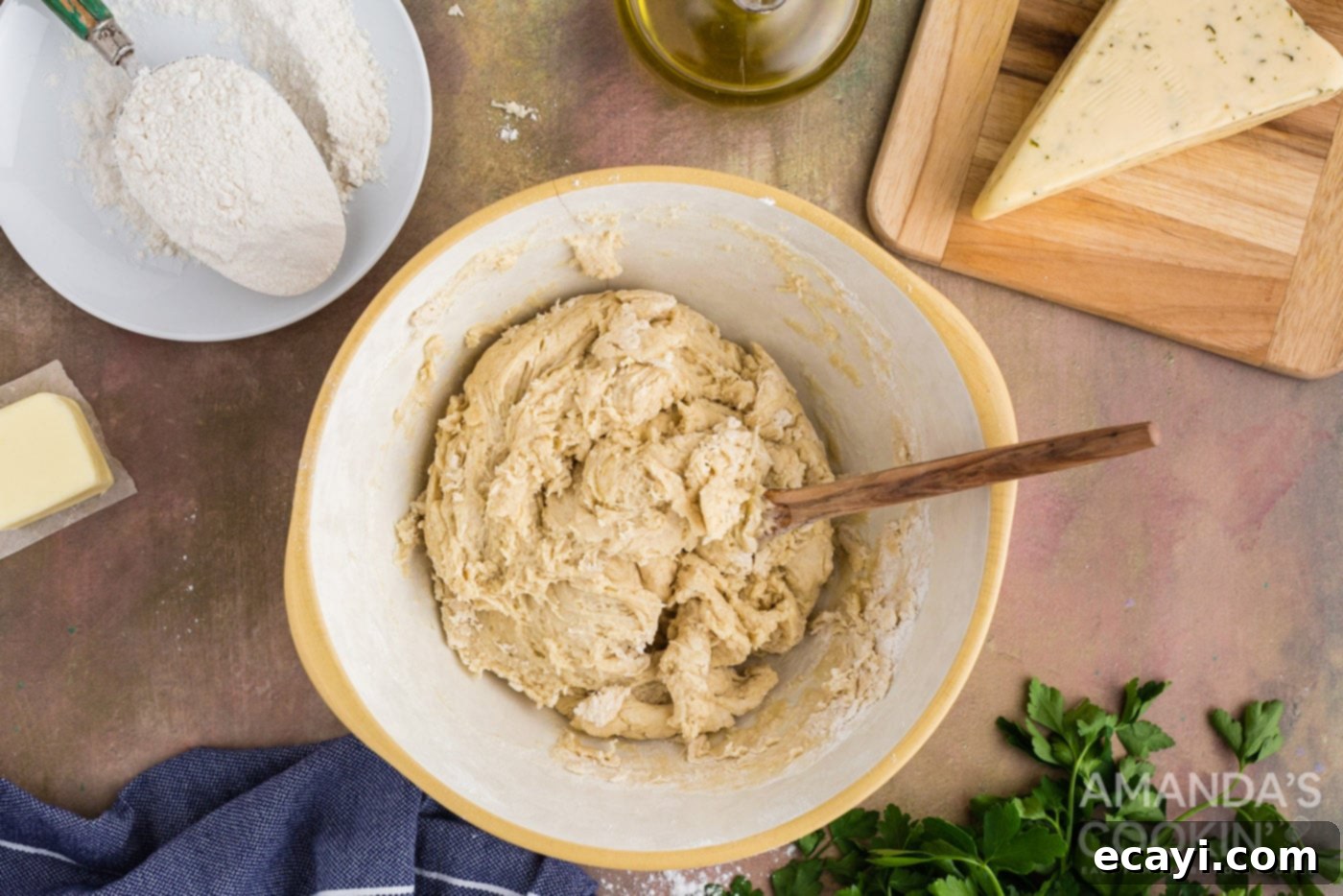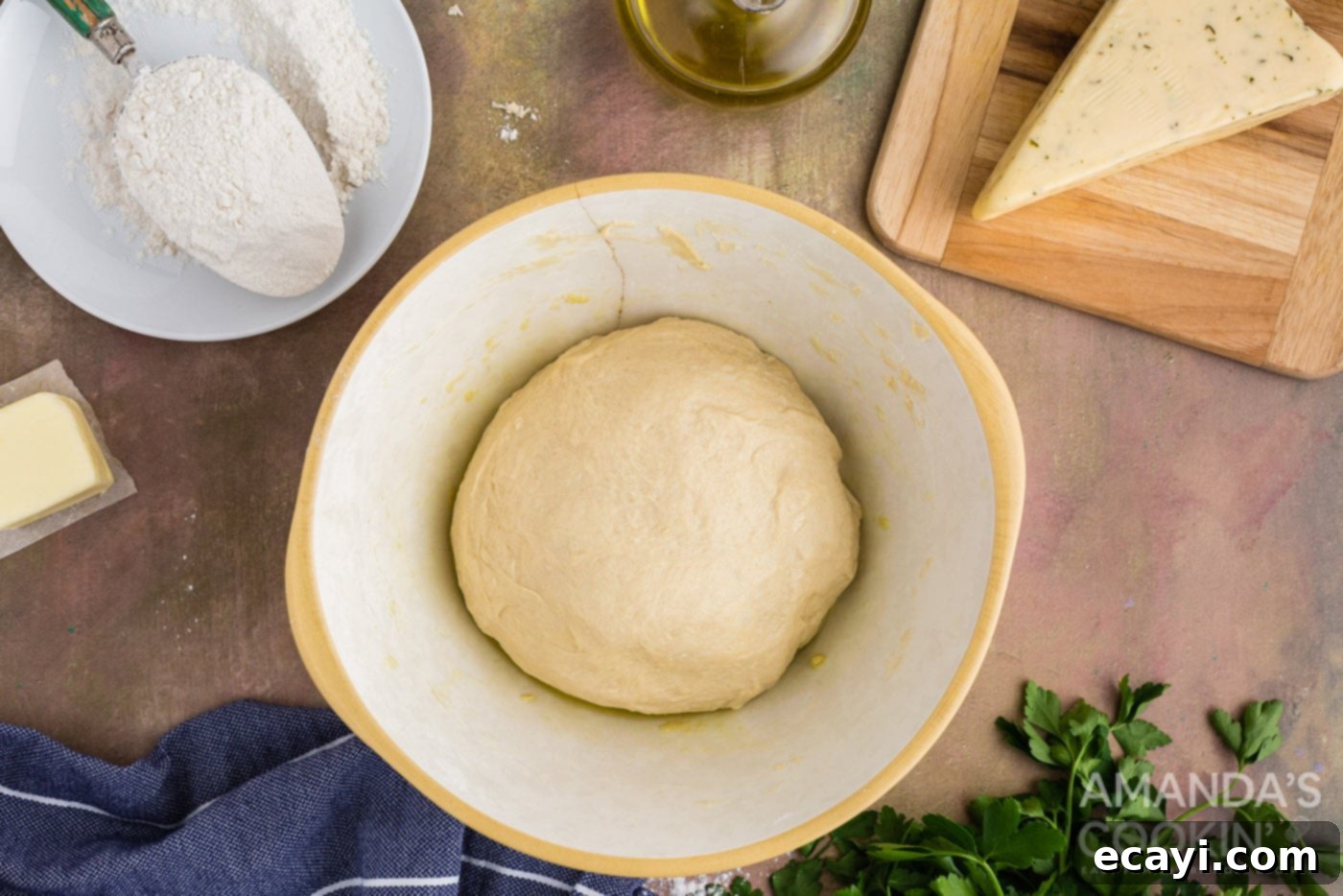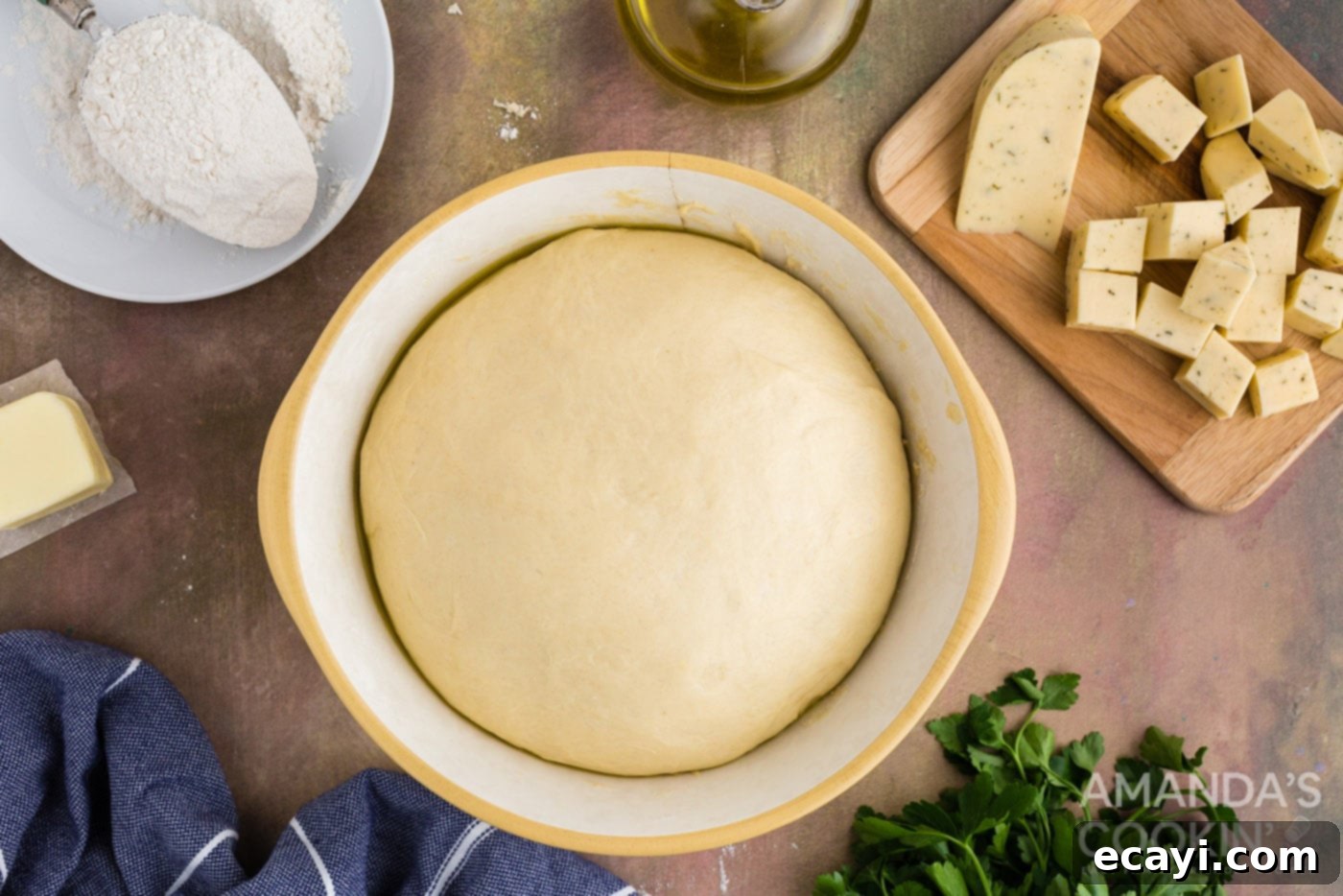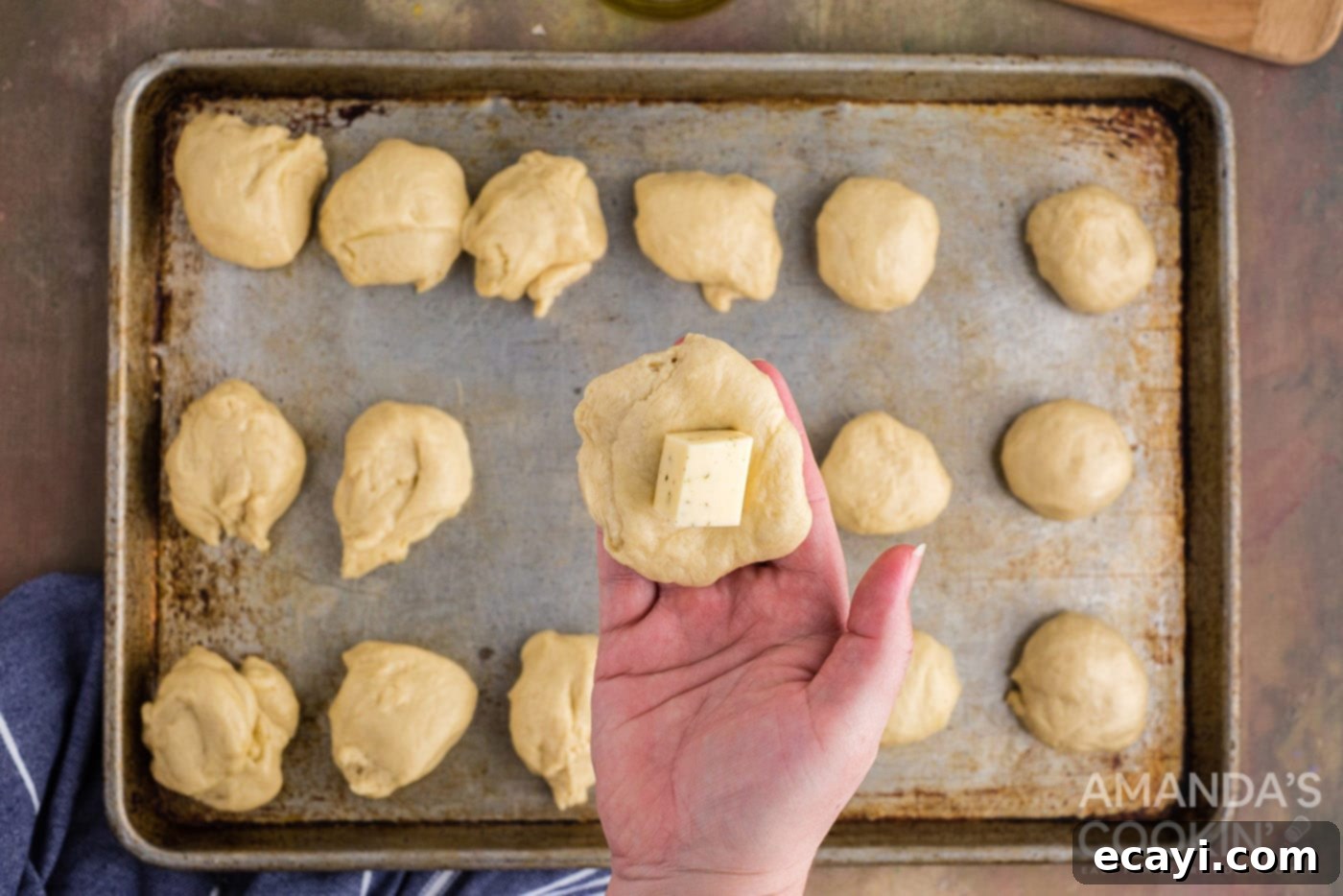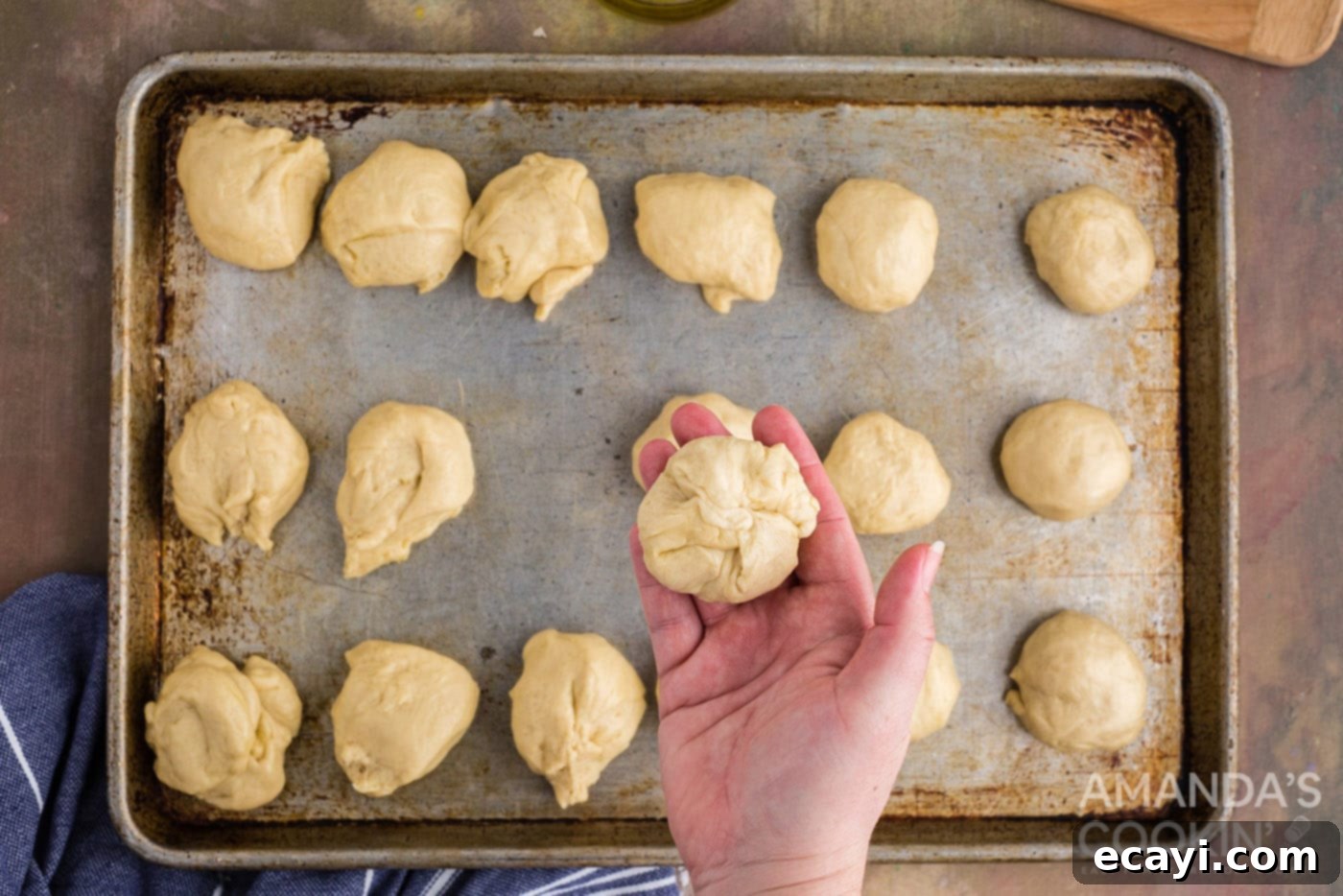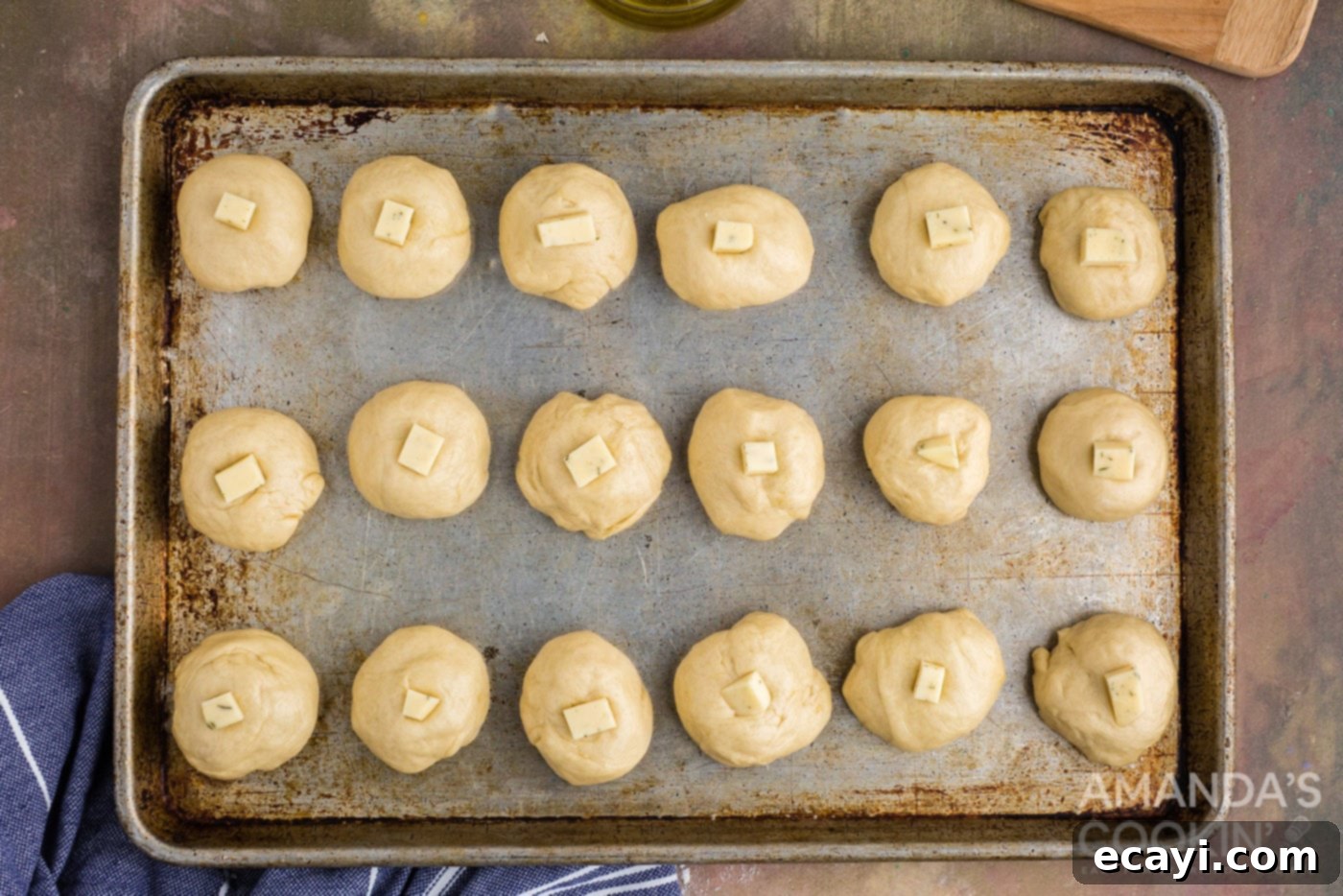Irresistible Homemade Garlic Cheese Rolls: The Ultimate Cheesy Bread Experience
Prepare to be enchanted by these utterly irresistible garlic cheese rolls, a culinary delight crafted from a simple, easy-to-make homemade dough. Each roll is generously stuffed with a savory garlic cheese filling, then baked to golden perfection and brushed with a luscious coat of melted butter, ensuring every bite is a symphony of flavor and texture. Perfect as a side dish or a delightful snack, these rolls are guaranteed to become a family favorite.
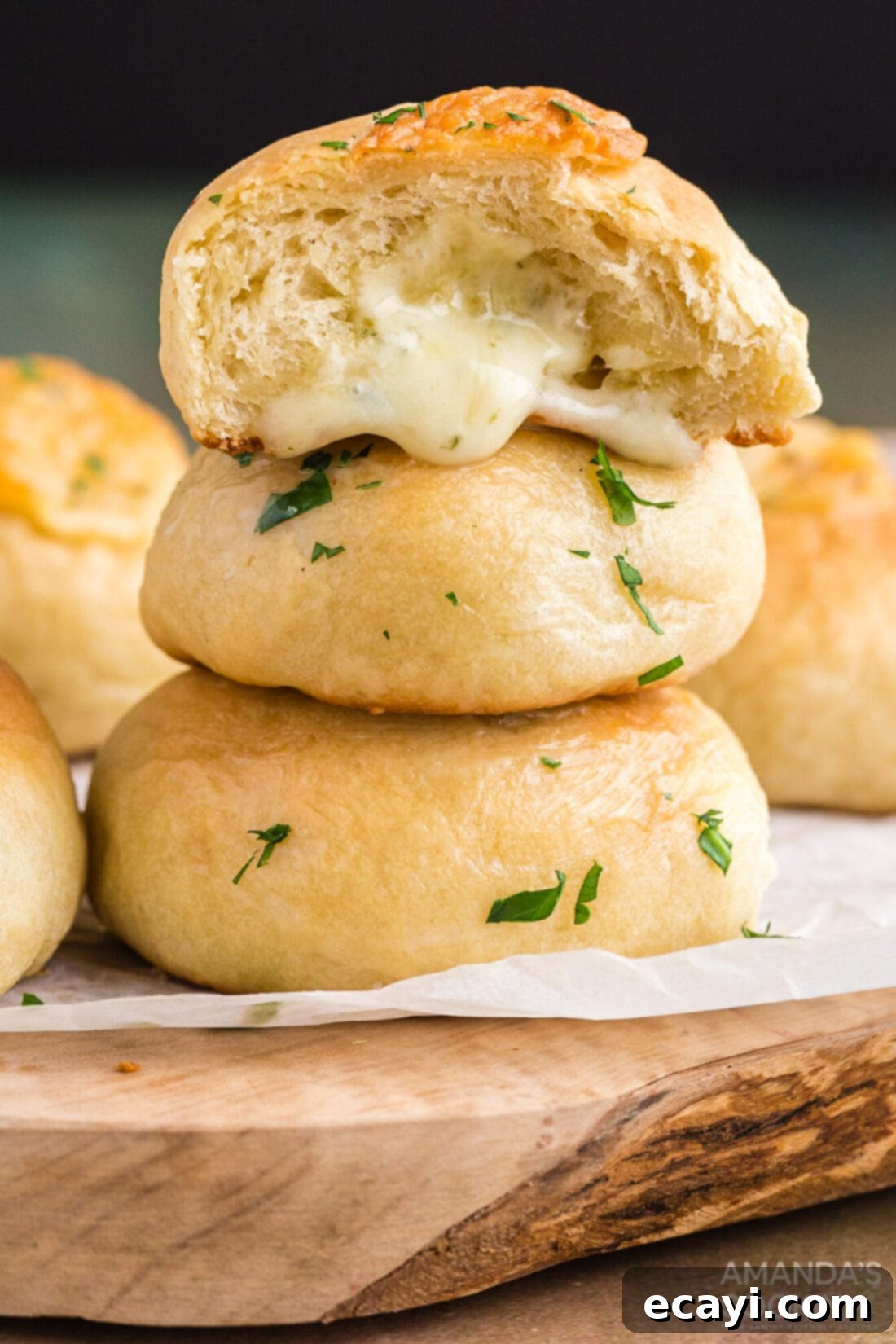
Why This Easy Garlic Cheese Roll Recipe Works Wonders
There’s an undeniable magic that happens when you combine the rich, comforting flavors of bread, the pungent allure of garlic, and the decadent joy of melted cheese. This recipe for homemade garlic cheese rolls harnesses that magic, delivering a side dish that’s far from ordinary. Serving these pull-apart cheesy rolls warm and fresh from the oven is key to experiencing their full glory. The melted cheese creates an incredible gooey texture that stretches with each tug, while the soft, buttery dough provides the perfect canvas for the intense garlic flavor.
These cheesy garlic rolls are incredibly versatile, making them a fantastic accompaniment for almost any meal. They elevate simple dinners and add a touch of gourmet comfort to special occasions. Imagine them alongside hearty main courses like a slow-cooked crockpot roast beef, a robust hamburger stew, or even a classic lasagna. They’re also perfect for soaking up rich sauces, making them an indispensable addition to your dinner table. Beyond dinner, these rolls make an excellent appetizer for gatherings, a satisfying snack, or even a unique addition to a brunch spread. Their comforting appeal is truly universal.
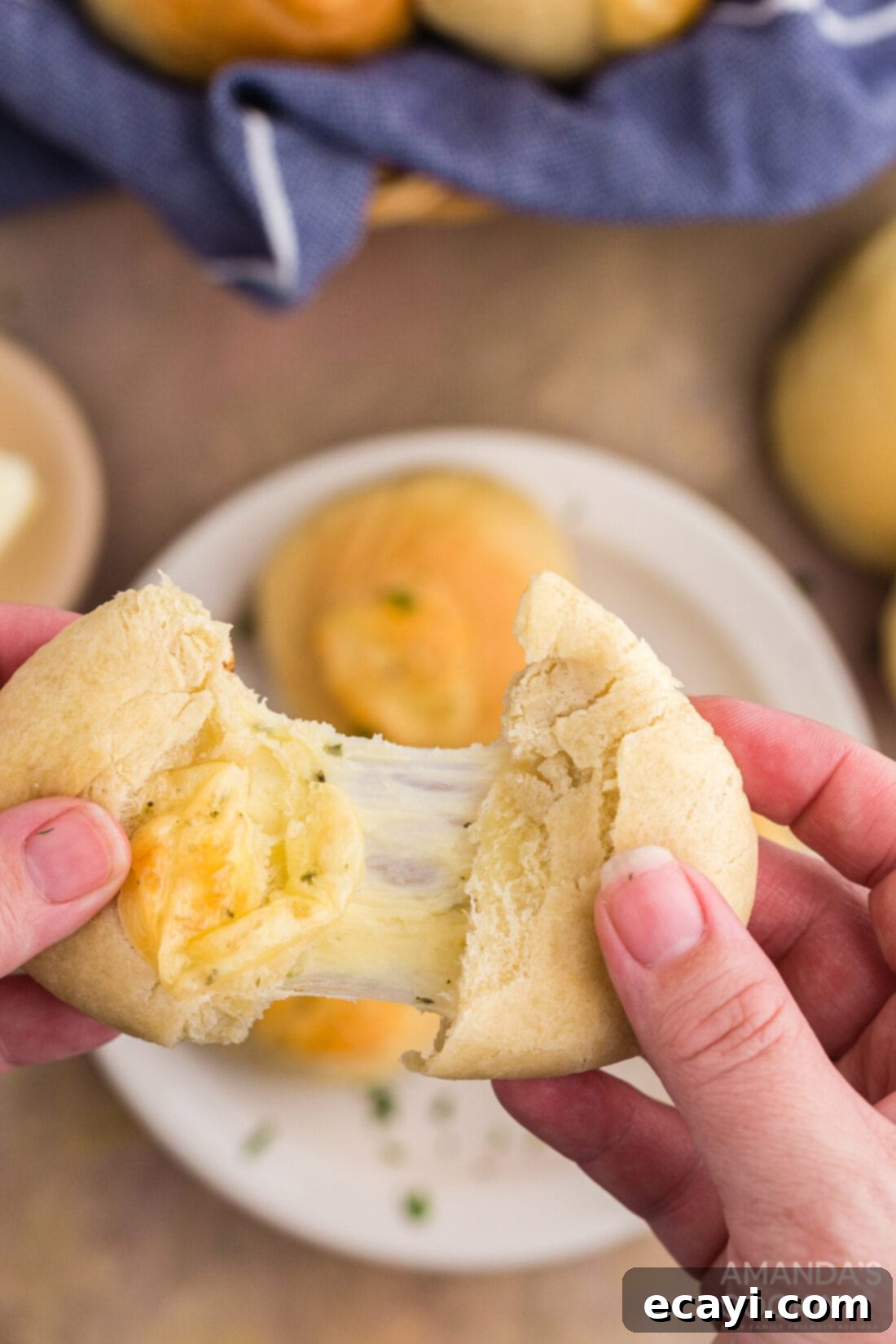
Essential Ingredients for Your Garlic Cheese Rolls
To create these delectable garlic cheese rolls, you’ll need a selection of common pantry staples and fresh ingredients. You can find all precise measurements, a complete list of ingredients, and detailed instructions in the printable recipe card at the very end of this post. Here’s a deeper dive into the key components:
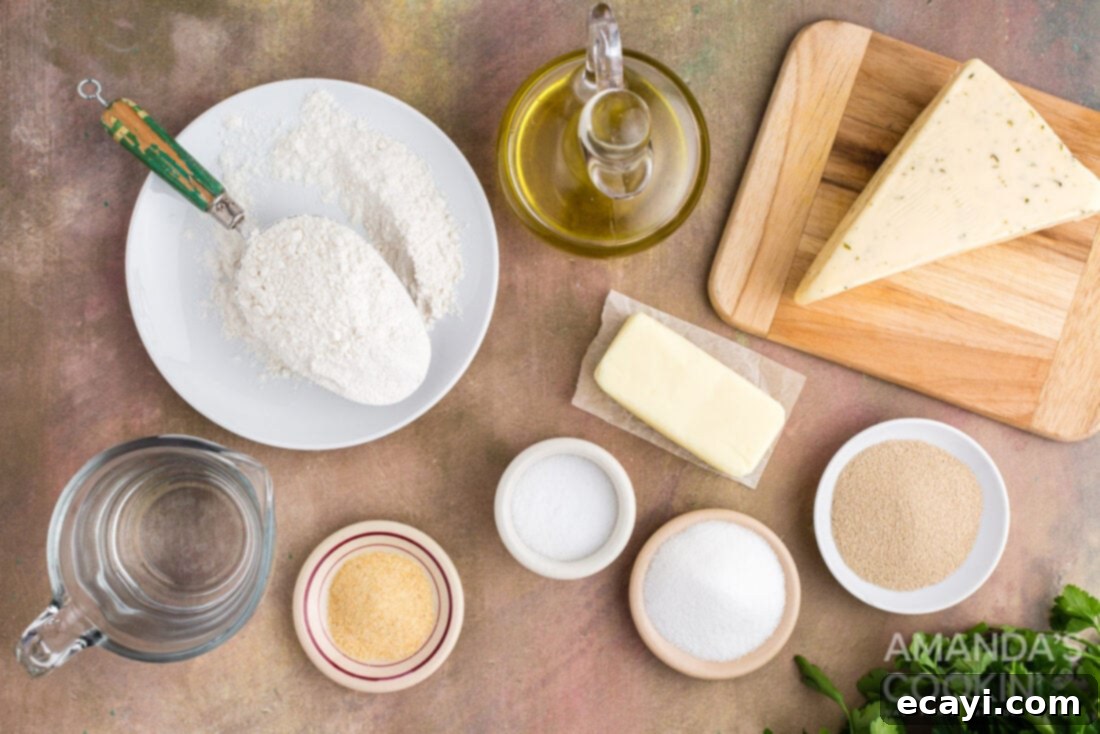
CHEESE – The star of the show! For maximum flavor, we highly recommend using a high-quality garlic cheese. Its pre-infused garlic notes truly amplify the overall taste of the rolls. However, don’t feel limited. You can easily substitute with any cheese that melts beautifully and offers a flavor you love. Excellent choices include classic mozzarella for its incredible stretch, sharp cheddar for a tangy bite, creamy Monterey Jack, or even a blend of cheeses like provolone and fontina. The key is to select a cheese that becomes gooey and delicious when heated, ensuring that signature pull-apart cheesiness.
DRY INGREDIENTS – Our recipe calls for standard all-purpose flour, which provides a light and airy texture to the rolls. If you’re interested in incorporating whole grains, you can experiment with substituting *some* of the all-purpose flour with whole wheat flour. A good starting point is to use half all-purpose and half whole wheat flour. We advise against replacing all of the all-purpose flour with whole wheat, as this can result in a denser, heavier roll due to the higher fiber content and different gluten structure of whole wheat flour.
FATS – This recipe uses both butter and olive oil, each contributing uniquely to the texture and flavor. Unsalted butter is preferred, as it gives you complete control over the salt content of the final product. If you opt for salted butter, remember to reduce the amount of salt added to the dough by approximately half a teaspoon. Olive oil adds a wonderful depth of flavor and moisture to baked goods, creating a softer crumb. If olive oil isn’t on hand, vegetable oil or canola oil are perfectly suitable substitutes, though they may impart a slightly different flavor profile.
YEAST & WATER – Active dry or instant yeast is essential for the rise of these fluffy rolls. Warm water (around 105-115°F or 40-46°C) is crucial for activating the yeast; water that’s too cold won’t activate it, while water that’s too hot can kill it. The foaming action of the yeast after a few minutes indicates it’s alive and ready to work its magic.
SUGAR – A small amount of sugar acts as food for the yeast, helping it activate and ensuring a good rise. It also contributes to the delicious golden-brown crust of the rolls.
GARLIC POWDER – This provides a consistent garlic flavor throughout the dough. For an even more intense garlic punch, you could also add some fresh minced garlic to the dough or to the melted butter for brushing, but be mindful that fresh garlic can be stronger.
Step-by-Step Guide: Crafting Delicious Garlic Cheese Rolls
These step-by-step photos and detailed instructions are provided to help you visualize each stage of making this recipe. For the printable version, complete with precise measurements and comprehensive instructions, simply Jump to Recipe at the bottom of this page.
- Begin by sprinkling the instant yeast evenly over the warm water in a large mixing bowl. Allow this mixture to sit undisturbed for about 5-10 minutes. During this time, the yeast should become foamy and bubbly, indicating that it’s active and ready to make your dough rise beautifully. This crucial step ensures your rolls will be light and fluffy.

- Once the yeast mixture is actively foaming, demonstrating its vitality, proceed by adding the sugar, garlic powder, melted unsalted butter, olive oil, and salt to the bowl. Stir these wet ingredients together thoroughly. Gradually begin to add the all-purpose flour, incorporating it into the wet mixture. You can do this using a stand mixer fitted with a dough hook, which makes the kneading process much easier, or by hand. Knead the dough for a full 10 minutes until it becomes smooth, elastic, and pulls away from the sides of the bowl. Transfer the kneaded dough to a lightly oiled bowl, turning it once to coat, then cover it with a clean, soft cloth.


- Allow the dough to rise in a warm, draft-free place for approximately 30 minutes, or until it has visibly doubled in size. The warmth helps the yeast thrive, creating air pockets that give the rolls their characteristic fluffy texture.


- While the dough is rising or immediately after, preheat your oven to 375°F (190°C). Prepare an insulated baking sheet by lining it with parchment paper. This prevents sticking and helps ensure even baking.
- Once the dough has risen, gently punch it down to release the air. Divide the dough into 18 equal pieces. For best results and uniform rolls, we highly recommend using a kitchen scale to weigh each dough portion. Flatten each piece slightly, then place about a 3/4-inch chunk of your chosen garlic cheese into the center. Carefully gather all the edges of the dough around the cheese, pinching them tightly together to seal the cheese completely inside. This step is crucial to prevent the cheese from oozing out during baking.
EXPERT TIP: Achieving evenly sized rolls not only looks professional but also ensures they bake consistently. A kitchen scale simplifies this task significantly.

- Place each sealed dough ball onto the prepared baking sheet with the pinched side facing down. This helps maintain a smooth, attractive top surface for your rolls.

- If desired, cut small, thin slices or cubes from any remaining garlic cheese and gently place them on top of each shaped bun. This will create extra pockets of bubbly, melted cheese on the surface, adding even more visual appeal and flavor.

- Bake the rolls for 11-15 minutes, or until the bread achieves a beautiful golden-brown color and the cheese within and on top is visibly bubbly and melted. Immediately after removing them from the oven, brush the warm rolls generously with the reserved melted butter. This adds shine, extra flavor, and keeps them soft. Serve your homemade garlic cheese rolls warm and enjoy!
Frequently Asked Questions About Garlic Cheese Rolls
These garlic cheese rolls are undoubtedly at their peak when served fresh and warm, directly from the oven. However, leftovers can be stored for up to 4 days. Ensure they are sealed in an airtight container to maintain freshness and prevent them from drying out. Store them at room temperature for optimal texture. For reheating, a few minutes in a microwave or a quick warm-up in a preheated oven (300°F/150°C) will restore their delightful warmth and gooey cheese.
Yes, absolutely! Bread flour has a higher protein content than all-purpose flour, which means it will develop more gluten. This can result in a chewier, slightly more structured roll. You can directly substitute bread flour for all-purpose flour in equal amounts in this recipe. Just be aware that the dough might feel a little stiffer during kneading, but the final result will still be wonderfully delicious.
Yes, you can certainly use active dry yeast as a substitute for instant yeast. The main difference lies in how they are activated. Active dry yeast typically requires proofing (dissolving in warm water and allowing it to foam) before mixing with other ingredients, which is exactly what our first step outlines. Instant yeast, on the other hand, can often be mixed directly with the dry ingredients. Since this recipe already incorporates a proofing step for the yeast, following the instructions as written will work perfectly with active dry yeast.
Yes, these rolls freeze wonderfully! To freeze baked rolls, allow them to cool completely. Then, place them in a single layer on a baking sheet and freeze until solid. Once frozen, transfer them to a freezer-safe bag or airtight container for up to 2-3 months. Reheat frozen rolls in a preheated oven (350°F/175°C) for about 10-15 minutes, or until warmed through and the cheese is melted again.
You can also freeze the unbaked dough. After dividing and stuffing the dough balls, arrange them on a baking sheet and freeze until firm. Once solid, transfer to a freezer-safe bag. When ready to bake, thaw the frozen dough balls in the refrigerator overnight, then let them come to room temperature and rise for 30-60 minutes before baking as directed.
For an extra burst of flavor and visual appeal, consider adding finely chopped fresh parsley or chives to the melted butter you brush on the rolls after baking. A pinch of extra garlic powder or even a dash of onion powder can also enhance the savory notes. Some people love a sprinkle of grated Parmesan cheese on top for a richer crust.
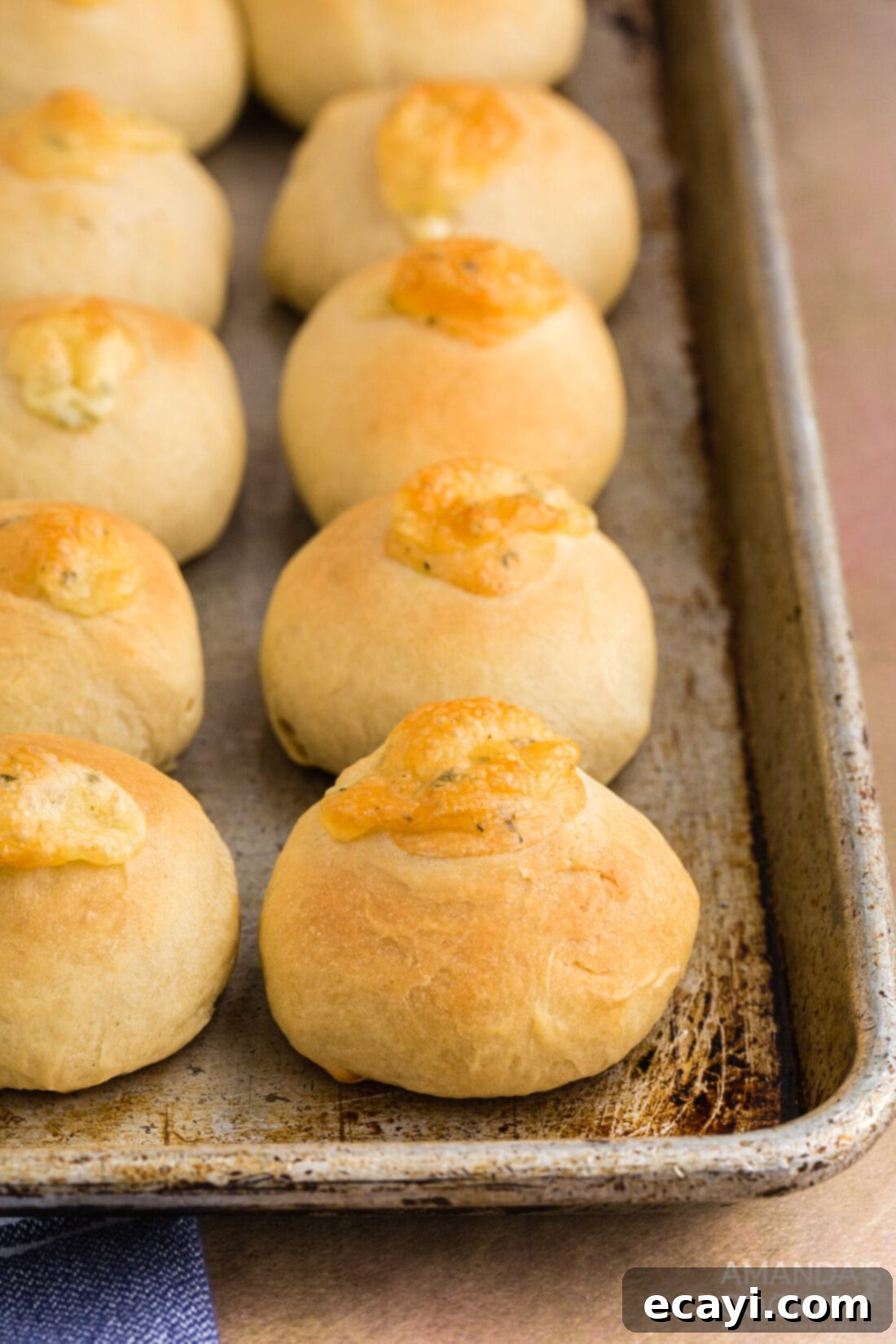
A soft, warm, and fragrant garlic cheese roll is truly the ultimate dinner side that promises to delight everyone at your table. Especially when it emerges golden from the oven, generously brushed with melted butter, and perhaps even sprinkled with a hint of fresh chopped parsley!
Discover More Delicious Roll Recipes
If you loved these cheesy garlic rolls, you’ll be thrilled to explore other fantastic roll recipes from our collection:
- Bretzel Rolls
- Parmesan Garlic Rolls
- Homemade Hawaiian Rolls
- Easy Homemade Dinner Rolls
- Homemade Pull Apart Dinner Rolls
- Bunny Rolls
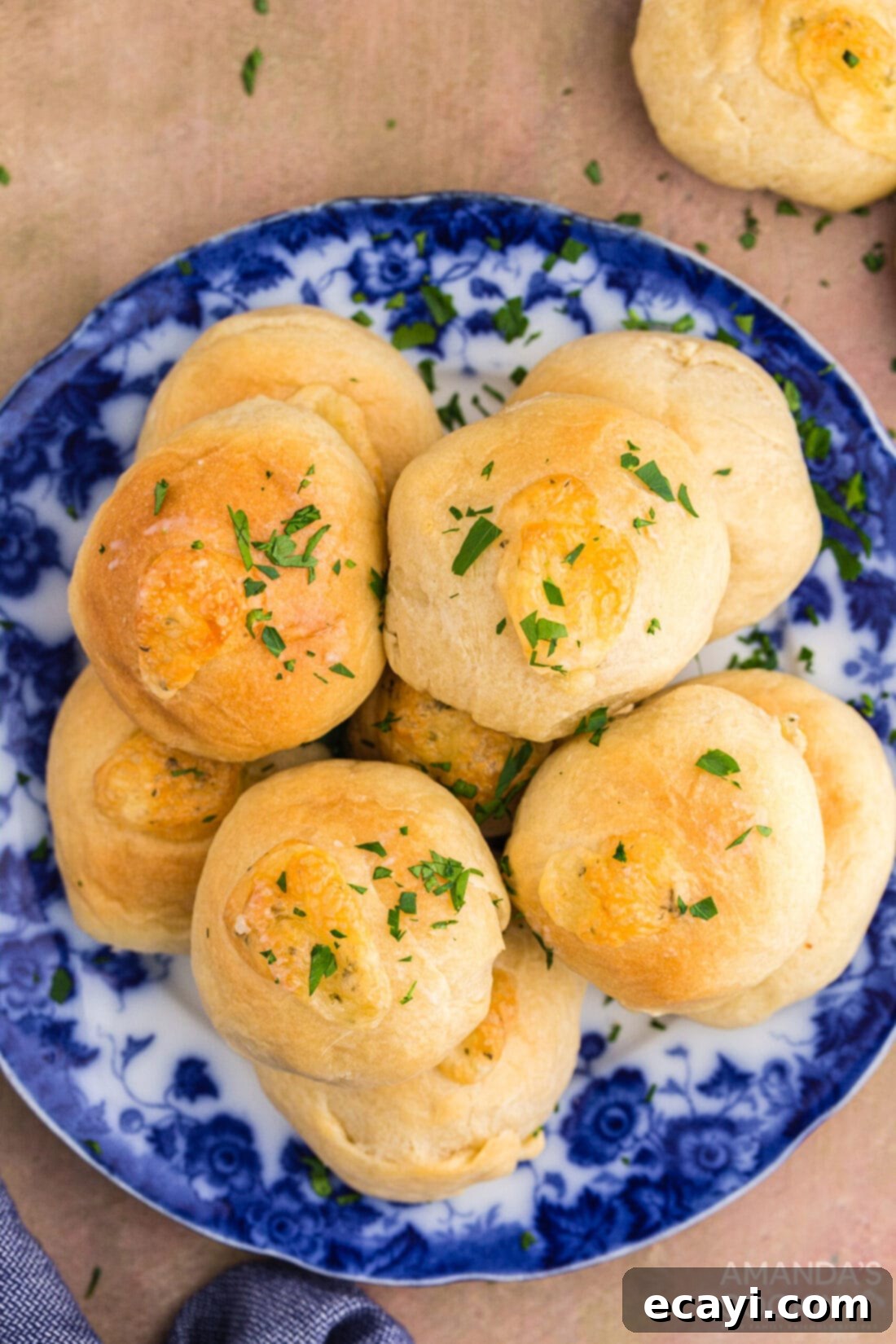
This delightful recipe for stuffed cheese buns was originally discovered on Pinterest, leading me to Yammie’s Noshery where I found her inspiring Peeta’s Stuffed Cheese Buns, famously inspired by the Hunger Games series. It’s a testament to how creative inspiration can transform simple ingredients into something truly memorable.
I find immense joy in baking and cooking, and it’s my passion to share these kitchen experiences and delicious recipes with all of you! Remembering to return for daily inspiration can sometimes be a challenge, which is why I offer a convenient newsletter delivered straight to your inbox every time a new recipe is posted. Simply subscribe today and start receiving your free daily recipes, making it easier than ever to discover your next favorite meal!
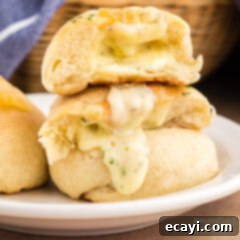
Garlic Cheese Rolls
IMPORTANT – There are often Frequently Asked Questions within the blog post that you may find helpful. Simply scroll back up to read them!
Print It
Pin It
Rate It
Save ItSaved!
Ingredients
- 1 cup warm water approximately 115 F
- 2 tablespoons SAF instant yeast
- 2 tablespoons sugar
- 2 teaspoons garlic powder
- ¼ cup unsalted butter melted
- ¼ cup olive oil
- 3 cups unbleached all-purpose flour
- 2 teaspoons salt
- 8 oz. garlic cheese
- 2 tablespoons unsalted butter melted
Things You’ll Need
-
Stand mixer with dough hook
-
Insulated baking sheets
-
Kitchen scale
Before You Begin
- We’re using our favorite garlic cheese for this recipe to really ramp up the flavor, but you can certainly substitute it with any cheese you’d like. Mozzarella, cheddar, or really any melty cheese will work.
- This recipe uses regular all-purpose flour. If you would like to try substituting for whole wheat flour, do NOT replace all of the all-purpose flour with whole wheat, instead, use half regular and half wheat. Using whole wheat flour can cause your rolls to be too dense.
- We use unsalted butter in this recipe, if you substitute with salted butter instead, reduce the amount of salt in the recipe by half a teaspoon. We love the flavor that olive oil adds to baked goods, but you can use vegetable oil or canola oil instead.
Instructions
-
Sprinkle yeast over the warm water and let it sit for a few minutes. Once the yeast begins to foam, you can add the sugar, garlic powder, melted butter, oil and salt. Mix together then gradually add the flour, mixing in your stand mixer with a dough hook or by hand. Knead for 10 minutes then place in an oiled bowl and cover with a soft cloth.
-
Let the dough rise for about 30 minutes, or until the dough doubles in size.
-
Preheat the oven to 375 F. Line insulated baking sheet with parchment paper.
-
Divide the dough into 18 equal pieces. Put about a 3/4-inch chunk of cheese in each one and make sure you pinch all the edges back up tightly. Put the pinched side down on the baking sheet. Cut small slices from remaining cheese and place on top of buns.
-
Bake for 11-15 minutes until the bread is golden brown and the cheese is bubbly. Brush with the melted butter and serve warm.
Nutrition
The recipes on this blog are tested with a conventional gas oven and gas stovetop. It’s important to note that some ovens, especially as they age, can cook and bake inconsistently. Using an inexpensive oven thermometer can assure you that your oven is truly heating to the proper temperature. If you use a toaster oven or countertop oven, please keep in mind that they may not distribute heat the same as a conventional full sized oven and you may need to adjust your cooking/baking times. In the case of recipes made with a pressure cooker, air fryer, slow cooker, or other appliance, a link to the appliances we use is listed within each respective recipe. For baking recipes where measurements are given by weight, please note that results may not be the same if cups are used instead, and we can’t guarantee success with that method.
This post originally appeared here on Apr 29, 2013 and has since been updated with new photos and expert tips.
